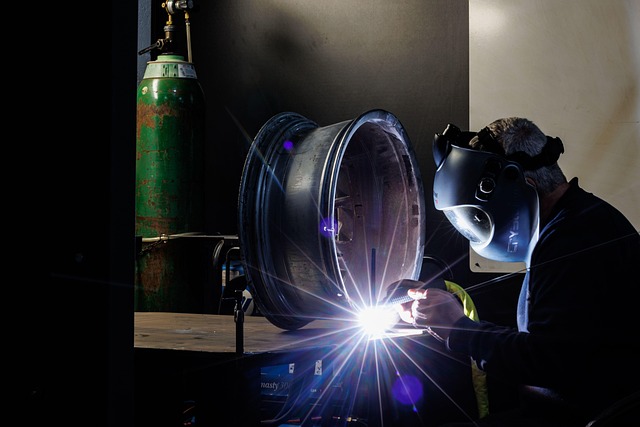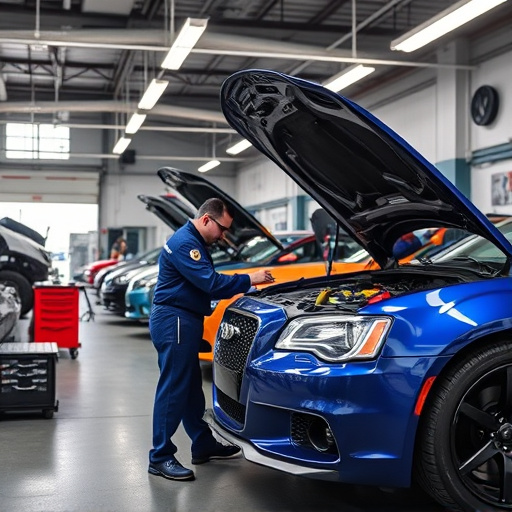Insurance Recommended Repair Agreements are essential contracts between insurers and repair shops, streamlining post-accident vehicle repairs by defining work scope, pricing, and quality standards. These agreements protect policyholders from unnecessary expenses, minimize time and financial burdens, and ensure high-quality, transparent car collision repairs. Regulatory bodies monitor these interactions to prevent conflicts of interest, maintaining consumer protection and fair practices within the insurance sector. Ultimately, these agreements facilitate convenient, cost-effective, and safe auto body restoration services for consumers while fostering trust and reputation for reputable repair shops.
Insurers often enter into recommended repair agreements, setting standards for vehicle repairs after accidents. But who regulates these agreements? This article delves into the regulatory landscape surrounding insurance recommended repair agreements, exploring the roles of key bodies and their implications for consumers and businesses. Understanding these dynamics is crucial in ensuring fair practices and high-quality repairs within the insurance sector.
- Understanding Insurance Recommended Repair Agreements
- The Role of Regulatory Bodies in Oversight
- Implications for Consumers and Businesses
Understanding Insurance Recommended Repair Agreements

Insurance Recommended Repair Agreements are contracts between insurance providers and repair shops or mechanics that outline the process for repairing vehicles involved in accidents. These agreements specify who is responsible for authorizing and paying for various types of auto repair services, including car paint repairs and even innovative methods like paintless dent repair. The goal is to streamline the claims process and ensure customers receive quality repairs while maintaining control over costs.
These agreements cover a range of aspects such as the scope of work, pricing structures, and quality standards. Insurers aim to protect policyholders by ensuring that repairs are performed efficiently and accurately, without unnecessary expenses. By agreeing on these terms, both parties can collaborate effectively, minimizing the time and financial burden for insured individuals following an accident, be it a minor dent or more extensive car paint repair needs.
The Role of Regulatory Bodies in Oversight

Regulatory bodies play a vital role in ensuring fair practices within the insurance sector, particularly when it comes to recommended repair agreements. These organizations are tasked with overseeing the relationships between insurers and repair shops, guaranteeing that consumers receive high-quality and cost-effective car collision repair services. Their oversight ensures transparency and prevents any potential conflict of interest.
In many jurisdictions, regulatory bodies establish guidelines and standards for automotive repair, including those related to recommended repairs. They monitor compliance, investigate complaints, and enforce regulations to protect the rights of policyholders. This process empowers consumers, ensuring they have access to reliable car restoration services while maintaining control over their insurance claims and repair choices.
Implications for Consumers and Businesses

For consumers, insurance recommended repair agreements play a pivotal role in shaping their vehicle ownership experience. When an accident occurs, these agreements dictate the process for getting their vehicles repaired, impacting both convenience and cost. Clear and transparent frameworks ensure consumers receive quality auto body restoration and car paint services while adhering to safety standards. This is crucial as it prevents substandard workmanship that could compromise vehicle integrity and safety.
Businesses involved in vehicle bodywork repairs thrive under well-regulated agreements. Standardized processes foster trust between insurers, repair shops, and policyholders. Reputable auto body shops can build a solid reputation by adhering to recommended repair procedures, ensuring customer satisfaction, and potentially fostering long-term relationships with both clients and insurance providers. This ultimately contributes to a robust and reliable automotive services industry.
Insurers play a pivotal role in facilitating repairs after accidents, and recommended repair agreements (RRA) ensure consumers receive quality, cost-effective services. However, it’s crucial that these agreements are regulated to protect both policyholders and businesses. Regulatory bodies, such as insurance departments or consumer protection agencies, oversee RRAs to prevent unfair practices, maintain transparency, and guarantee compliance with industry standards. This oversight benefits everyone involved, fostering trust in the insurance process and ensuring consumers receive the best possible repairs for their vehicles.














